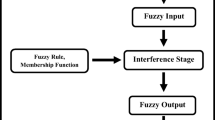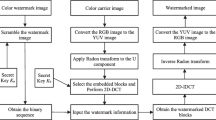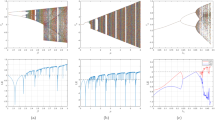Abstract
Chaos means innovation in the field of design. Meanwhile, the product image system is not only a quantified ‘formula’ between product and psychological cognitive semantics, but also a nonlinear “system”. Therefore, the chaotic study of product color image system was carried out to grasp the users’ color sensibility demands in their complex and nonlinear perceptual cognitive processes accurately, which could help the developers to keep up with market trends and reduce the blindness of design. In this study, the Chaos Theory combine with the Kansei Engineering were applied to obtain the color brand image, collect the time series and analyze the chaos of product color image system. The results showed that product color image system has a chaotic characteristic. Furthermore, the chaotic phenomenon in the color image system of the available products was analyzed to show that the product color trends could be quantitatively predicted. At last, a product color image perception chaotic box was proposed to conceive based on the result of this study, which provides new ideas and theoretical support for the in-depth exploration of complex systems of color images. This is a new attempt to apply the Chaos Theory to the color image cognition process.







Similar content being viewed by others
Data availability
All data generated or analysed during this study are included in this published article.
References
Alves AL, Giuli MR, Zitkus E et al (2022) Color influence on the use satisfaction of kitchen utensils: an ergonomic and perceptual study. Int J Ind Ergon 90(May):103314. https://doi.org/10.1016/j.ergon.2022.103314
Banfield JD, Raftery AE (1993) Model-based Gaussian and non-Gaussian clustering. Biometrics 49:803–821
Bittermann MS (2018) Insight into color aesthetics from probabilistic perception modeling. Color Res Appl 43(4):527–543. https://doi.org/10.1002/col.22216
Cash P, Kreye M (2018) Exploring uncertainty perception as a driver of design activity. Des Stud 54:50–79. https://doi.org/10.1016/j.destud.2017.10.004
Conway BR (2012) Color consilience: color through the lens of art practice, history, philosophy, and neuroscience. Ann N Y Acad Sci 1251:77–94. https://doi.org/10.1111/j.1749-6632.2012.06470.x
Dahlgren K (2010) The cognitive structure of social categories. Cogn Sci 9(3):379–398. https://doi.org/10.1207/s15516709cog0903_4
Dickey D (1991) Time series theory and methods. Techno Metrics 31(1):121–121
Ding M, Ding T, Chen X et al (2022a) Using event-related potentials to identify user’s moods induced by product color stimuli with different attributes. Displays 74(December 2021):102198. https://doi.org/10.1016/j.displa.2022.102198
Ding M, Yuan Y, Zhang X, et al. (2022b) Product color emotional design based on deep learning. Comput Integr Manuf Syst, 1–13. https://kns.cnki.net/kcms/detail/11.59-46.TP.20220411.1042.016.html
Dingbang Y, Hong S (2012) Design introduction. People’s Fine Arts Publishing House, Beijing
Ferrer E (2004) Les Lenguajes Del Color. Yilin Publishing House, Nanjing, p P49
Fourie I (2012) Entropy and information theory (2nd ed.). Online Inf Rev 36(3):481–482. https://doi.org/10.1108/14684521211241477
Fraley C, Raftery AE (1998) How many clusters? Which clustering method? Answers via model-based cluster analysis. Comput J 41:578–588. https://doi.org/10.1093/comjnl/41.8.578
Gan Y, Ji Y, Jiang S et al (2021) Integrating aesthetic and emotional preferences in social robot design: an affective design approach with Kansei engineering and deep convolutional generative adversarial network. Int J Ind Ergon 83(August 2020):103128. https://doi.org/10.1016/j.ergon.2021.103128
Gero JS (1990) Design prototypes: a knowledge representation schema for design. AI Mag 11(4):26–36
Greenfield, GR, House, DH (2005) A Palette-Driven Approach to Image Color Transfer. Computational Aesthetics 2005: Eurographics workshop on computational aesthetics in graphics, visualization and imaging 2005, Girona, Spain, may 18–20, 2005. DBLP
Hanada M (2019) Associations of visual forms with colors: the minor role of emotion as the mediator. Color Res Appl 44(4):568–580. https://doi.org/10.1002/col.22382
Holtzschue L (2013) Understanding color: an introduction for designers, Fourth Edition. Publishing House of Electronics Industry, Beijing
Hsiao S-W (1995) A systematic method for color planning in product design. Color Res Appl 20(3):191–205. https://doi.org/10.1002/col.5080200309
Hu G, Pan Z, Zhang M, Chen D, Chen J (2014) An interactive method for generating harmonious color schemes. Color Res Appl 39(1):70–78. https://doi.org/10.1002/col.21762
Jian Z, Xu B, Jin L (2011) The localization algorithm of human body based on omnidirectional vision//information technology and artificial intelligence conference. IEEE. https://doi.org/10.1109/ITAIC.2011.6030303
Jiang X, Xiu-yue W, Peng H, Yi W, You-ting C (2016) Research on prediction methods of automobile styling based on the grey correlation theory. J Mach Des 33(2):114–117
Jiang X, Xiu-yue W, Yi W, Feng G (2017) Complexity computation approach of design cognition using deterministic information theory. China Mech Eng 28(5):596–602. https://doi.org/10.3969/j.issn.1004-132X.2017.05.015
Jianguo Y, Zhijun W (2013) Methods and trends of product emotional design. J Hunan Univ Sci Technol (Soc Sci Edit) 16(1):161–163
Jian-Ning S, Xin-Xin Z, Nan J, Xiao C (2016) Research on the entropy evaluation of product styling image under the cognitive difference. J Mach Des 33:105–108
Jian-Ning S, Zhi-Jun L, Peng W (2017) Review of product family modeling design method based on sensual image. J Mach Des 34(11):112–116
Jiao HQ, Chen SY, Sun XF, Wang WF (2013) Application of chaos theory in the garment industry and design. Appl Mech Mater 365-366:47–51. https://doi.org/10.4028/www.scientific.net/AMM.365-366.47
Jordán F, Scheuring I (2004) Network ecology: topological constraints on ecosystem dynamics. Phys Life Rev 1(3):139–172. https://doi.org/10.1016/j.plrev.2004.08.001
Juan L (2014) Chanel tells women the elegance and wisdom. Jilin Wenshi Publishing House, Changchun
Kai Q, Jianning S, Xinxin Z, Wenjin Y (2020) Evaluation and balance of cognitive friction: evaluation of product target image form combining entropy and game theory. Symmetry 12(1398):1–19. https://doi.org/10.3390/sym12091398
Kandela P (2001) Build Frank Gehry LANCET 358(9282):677–678
Khalaj J, Pedgley O (2019) A semantic discontinuity detection (sdd) method for comparing designers' product expressions with users' product impressions. Des Stud 62:36–67. https://doi.org/10.1016/j.destud.2019.02.002
Klimontovich, YL (1991) Turbulent motion and the structure of Chaos, Springer Science+Business Media, B.V
Kuhlthau CC (1991) Inside the search process: information seeking from the user’s perspective. J Am Soc Inf Sci 42(5):361–371. https://doi.org/10.1002/(SICI)1097-4571(199106)42:5<361::AID-ASI6>3.0.CO;2-#
Kumar R, Dhiman G (2021) A comparative study of fuzzy optimization through fuzzy number. Int J Modern Res 1:1–14
Kuo L, Chang T, Lai CC (2021) Research on product design modeling image and color psychological test. Displays 71(July 2021):102108. https://doi.org/10.1016/j.displa.2021.102108
Laurie E, Timothy J, Mavin, Kassandra et al (2016) Demands on cognitive processing: implications for verbalisation in complex work environments. Cogn Tech Work 19(1):1–16. https://doi.org/10.1007/s10111-016-0395-x
Lin H-H (2019) A systematic approach of predicting color preference on the basis of gray relational grade. Color Res Appl 44(2):194–204. https://doi.org/10.1002/col.22342
Lin Z, Jing Z (2014) Mathematical method study on image evaluation of product color design. J Mach Des 31(12):108–111
Linda H (2013) Understanding color: an introduction for designers, Fourth edition. Publishing House of Electronics Industry, Beijing
Man D, Lingying Z, Huining P et al (2021) An XGBoost based evaluation methodology of product color emotion design. J Adv Mech Des Syst Manuf 15(6):1–18. https://doi.org/10.1299/jamdsm.2021jamdsm0075
Mattingly, A (2011) Mind and method: an examination of cognitive activities in the design process. Proceedings of the 8th conference on Creativity & Cognition, the high Museum of art, Atlanta, Georgia, USA, November 3-6, 2011. ACM
Mei Z (2007) Look at teaching of color from the theory of color after the Newton age. ZHUANGSHI 41(165):41
Mitsuhiko H (2018) Correspondence analysis of color-emotion associations. Color Res Appl 43(2):224–237. https://doi.org/10.1002/col.22171
Newton I (1952) Opticks: or, a treatise of the reflections, refractions, inflections & colours of light. Am J Ophthalmol 15(1):66–66. https://doi.org/10.1126/science.74.1905.18
Nicole F, Louis N, Jameson KA, Komarova NL (2017) Quantitative approach for defining basic color terms and color category best exemplars. J Opt Soc Am A 34(8):1285–1300. https://doi.org/10.1364/JOSAA.34.001285
Packard NH, Crutchfield JP, Shaw RS (1980) Geometry from a time series. Phys Rev Lett 45(9):712–716. https://doi.org/10.1103/PhysRevLett.45.712
Poretski L, Lanir J, Arazy O (2017) Feel the image: the role of emotions in the image seeking process. Human–Comput Interact 4:1–38. https://doi.org/10.1080/07370024.2017.1359604
Razza B, Paschoarelli LC (2015) Affective perception of disposable razors: a kansei engineering approach. Proced Manuf 3:6228–6236. https://doi.org/10.1016/j.promfg.2015.07.750
Renbin X, Ji Z, Xue W (1997) Fractal design: a new approach to design for complex products. Chin High Technol Lett 1:22–26
Rosenstein MT, Collins JJ, Luca CJD (1993) A practical method for calculating largest Lyapunov exponents from small data set. Phys D Nonlin Phenom 65(1–2):117–134. https://doi.org/10.1016/0167-2789(93)90009-P
Shih‐Wen H (1995) A systematic method for color planning in product design. Color Res Appl 20(3):191–205
Tang L, Yang YG (2010) Chaotic time series analysis and its application research. J Wuhan Univ Technol 32(19):189–192. https://doi.org/10.3963/j.issn.1671-4431.2010.19.044
Tharangie KGD, Althaff ICM, Koichi Y et al (2011) Appraisal and guideline to utilise colours in interactive learning environments based on Kansei engineering. Int J Biom 3(4):285–299
Wang WM, Li Z, Tian ZG, Wang JW, Cheng MN (2018) Extracting and summarizing affective features and responses from online product descriptions and reviews: a kansei text mining approach. Eng Appl Artif Intell 73:149–162. https://doi.org/10.1016/j.engappai.2018.05.005
Watanabe M, Michida N, Kishi A, Nishikawa K (2019) Global structures of automotive interiors revealed by algorithms of the visual brain. Des Stud 62:100–128. https://doi.org/10.1016/j.destud.2018.10.004
Weipeng S, Heyuan W, Meng K (2018) Numerical simulation, control, and synchronization research on chaotic behavior of willamowski-Rssler system. J Dyn Control 16(1):35–40
Xian Y, Hanwu H (2017) User cognition expression based on concept extension: a case study of user cognition of intelligent fridge. J Psych Sci 40(5):1248–1252
Yiting, L (2013) Image of color combination in different types of objects. Doctoral dissertation, National Chiao Tung University. https://doi.org/10.6842/NCTU.2013.00031
Yu W (2012) Five elements and five colors and the exploration of Chinese traditional color view. Art Educ Res 21:31–33
Yu BY, Honda T, Sharqawy M, Yang M (2016) Human behavior and domain knowledge in parameter design of complex systems. Des Stud 45:242–267. https://doi.org/10.1016/j.destud.2016.04.005
Zhang X, Thomson V (2018) A knowledge-based measure of product complexity. Comput Ind Eng 115:80–87. https://doi.org/10.1002/col.22540
Zhang X, Yang M (2019) Color image knowledge model construction based on ontology. Color Res Appl 44(4):651–662. https://doi.org/10.1002/col.22374
Zhang X, Yang M, Su J, Yang W, Qiu K (2020) Research on product color design decision driven by brandimage. Color Res Appl:1–15. https://doi.org/10.1002/col.22540
Zhao WL, Deng CH, Ngo CW (2018) K-means: a revisit. Neuro Comput 291:195–206. https://doi.org/10.1016/j.neucom.2018.02.072
Zhiwei J (2011) The Chaos theory in architectural design. Chin Overseas Architect 6:58–59
Zhi-Xue S (2015) Multiple image selection of product color schemes based on grey relational analysis. J Mach Des 32(1):120–122
Zhou Y, Yang P, Wang SY (2014) Research of kansei image based on product appearance form deconstruction. Adv Mater Res 971-973:1316–1320. https://doi.org/10.4028/www.scientific.net/AMR.971-973.1316
Funding
This research was supported financially by the 2020 Tianjin University Co-construction Funds (282020373), the Science and Technology Research Projects of Higher Education Institutions in Hebei Province(QN2022138) and the National Natural Science Foundation of China(52275243).
Author information
Authors and Affiliations
Contributions
Conceptualization, Xinxin Zhang and Man Ding; methodology, Xinxin Zhang and Yueying Li; validation, Huining Pei; data curation, Xinxin Zhang; writing—original draft preparation, Xinxin Zhang and Huining Pei; writing—review and editing, Xinxin Zhang and Man Ding. All authors have read and agreed to the published version of the manuscript.
Corresponding author
Ethics declarations
Conflict of interest
The authors declare that they have no conflict of interest.
Ethical approval
All procedures performed in studies involving human participants were in accordance with the ethical standards of the institutional and/or national research committee and with the 1964 Helsinki declaration and its later amendments or comparable ethical standards.
Informed consent
Informed consent was obtained from all individual participants included in the study.
Additional information
Publisher’s note
Springer Nature remains neutral with regard to jurisdictional claims in published maps and institutional affiliations.
Rights and permissions
Springer Nature or its licensor (e.g. a society or other partner) holds exclusive rights to this article under a publishing agreement with the author(s) or other rightsholder(s); author self-archiving of the accepted manuscript version of this article is solely governed by the terms of such publishing agreement and applicable law.
About this article
Cite this article
Zhang, X., Li, Y., Pei, H. et al. Research on chaos of product color image system driven by brand image. Multimed Tools Appl 82, 24425–24444 (2023). https://doi.org/10.1007/s11042-023-14549-0
Received:
Revised:
Accepted:
Published:
Issue Date:
DOI: https://doi.org/10.1007/s11042-023-14549-0




